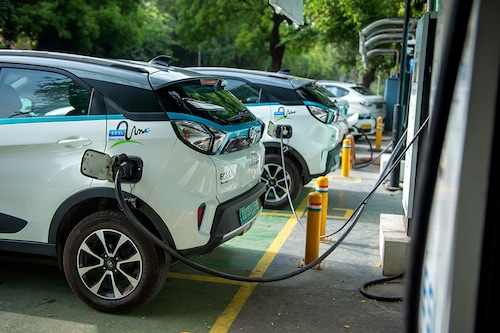Has Budget 2023 done enough for India's automobile industry?
There is plenty in the Budget for electric vehicles and domestic manufacturing, like provisions to further push scrapping of old vehicles and increase in customs duty of imported vehicles


India is walking the talk when it comes to green mobility. On February 1, India’s finance minister Nirmala Sitharaman announced a plan to provide customs duty exemption for importing capital goods and machinery required for the manufacture of lithium-ion cells for batteries used in electric vehicles. “To further provide impetus to green mobility, customs duty exemption is being extended to import of capital goods and machinery required for manufacture of lithium-ion cells for batteries used in electric vehicles," Sitharaman said during her speech.
The reduction in cost of manufacturing lithium-ion batteries could directly lead to a drop in price of electric vehicles in the country. “We believe that the thrust on electric mobility is the need of the hour," says Ramesh Nair, CEO, India & MD, market development, Asia at Colliers. “The Budget provided provisions related to battery production, investment in energy transition, will give a fillip to the EV industry in India.
Between 2023-2027, the EV space in India is likely to see investments of Rs94,000 crore (USD12.6 billion) across the automotive value chain. The Indian electric vehicle (EV) market is expected to see 40–45 percent EV adoption for two-wheeler vehicles and 15–20 percent for four-wheel passenger vehicles (PVs) by 2030, with 12 million to 13 million new two-wheeler EVs and 1 million new 4W PVs being sold in India annually by 2030, according to Bain & Company.
“Considering EV batteries account for approximately up to 60 percent of the EV cost, this relaxation will make electric vehicles more affordable and hence enhance the EV adoption rate," says Pankaj Sharma, co-Founder and director, Log9 Materials.
“It is also encouraging to see the government’s decision to announce viability gap funding for battery storage solutions and continuation of lower customs duty on lithium-ion cells," Chetan Maini, co-founder and chairman, Sun Mobility. Sitharaman had announced viability gap funding (VGF) for battery energy storage system (BESS) projects with a capacity of 4,000 MWh. “While this Budget is impactful, I feel that release of the Battery Swapping Policy covering subsidies and GST rate rationalisation from 18 percent to 5 percent on EV battery would have added further to the green growth agenda," adds Maini.
Additionally, the government has also announced further push towards scrapping old vehicles in the country, particularly those owned by the government. The government had announced the vehicle scrapping policy in the last Budget, aimed at phasing out vehicles older than 15 years as the country grapples with vehicular pollution across metro cities. “In addition to vehicle scrappage policy announced in Budget 2021-22, more funds have been allocated now to support efforts to scrap old vehicles under the central government," Sitharaman says. “States will also be supported to help them scrap old vehicles and old ambulances."
As part of the vehicle scrappage policy 2022, the Centre and state governments had said that it would provide 25 percent rebate on road tax for vehicles purchased to replace old ones. “Funds infusion in the scrappage policy is a remarkable step and is in the right direction to achieve India’s goal of being carbon neutral by 2070," Venkatram Mamillapalle, country CEO and managing director, Renault India says. “This policy would eventually help the entire eco-system of automotive industry as this will translate into growing orderbooks of OEMs, increased output and job creation."
Meanwhile, the government has also increased customs duty. For instance, for vehicles (including EVs) in semi-knocked down (SKD) form, the rate has been revised from 30 percent (+3 Social Welfare Surcharge or SWS) to 35 percent (+nil SWS).
“While there has been a customs duty increase of 10 percent on imported vehicles (including electric vehicles), the effective increase is around four percent as the social welfare surcharge which was earlier levied on such vehicles has been exempted. Nevertheless, this should incentivise domestic vehicle manufacturing in a segment which is largely used by Indian consumers and is also climate-friendly. How this increase impacts the ongoing FTA discussions, is however yet to be seen," says Gautam Khattar, principal, Price Waterhouse & Co.
First Published: Feb 01, 2023, 19:27
Subscribe Now